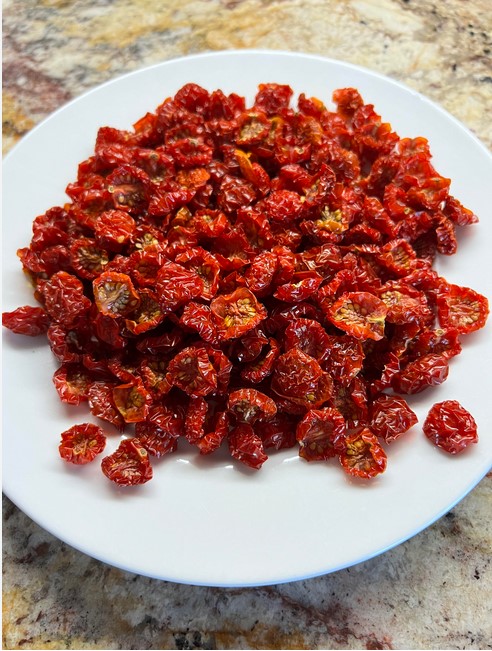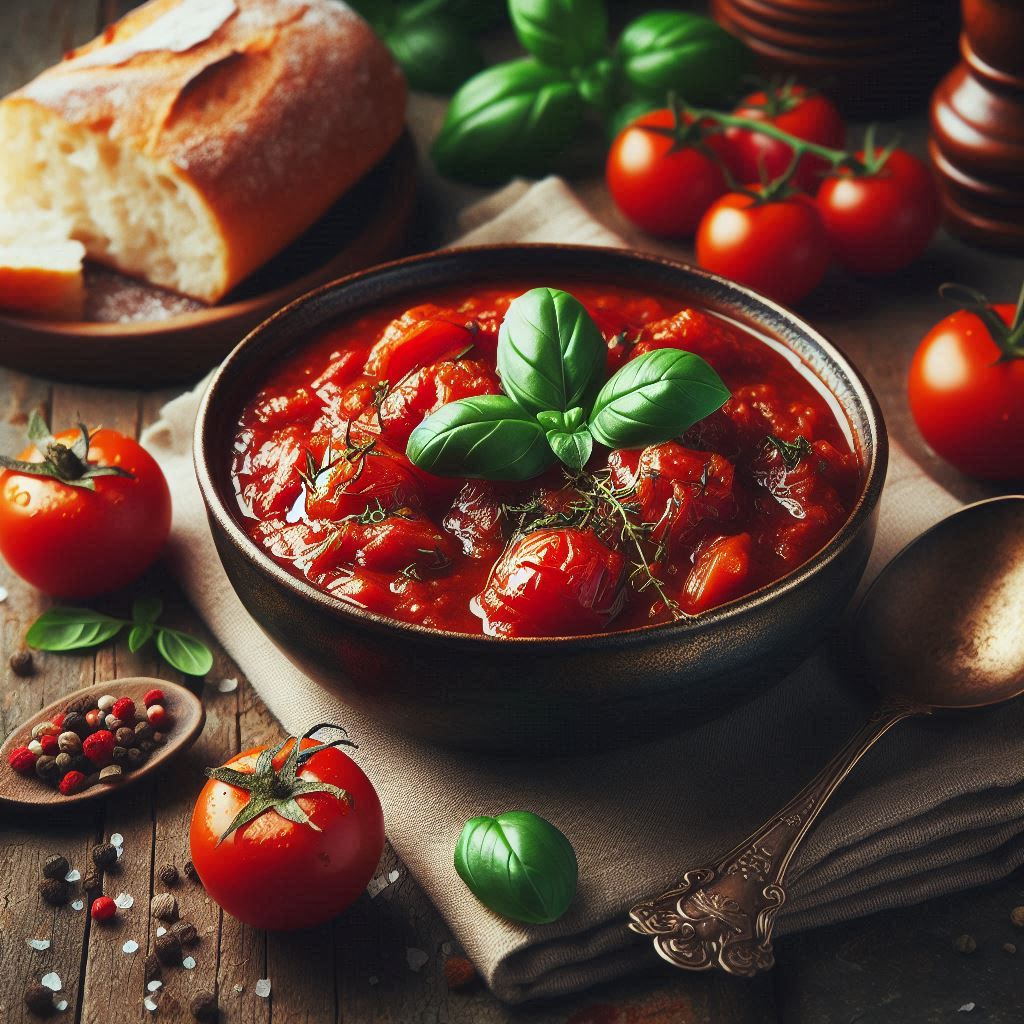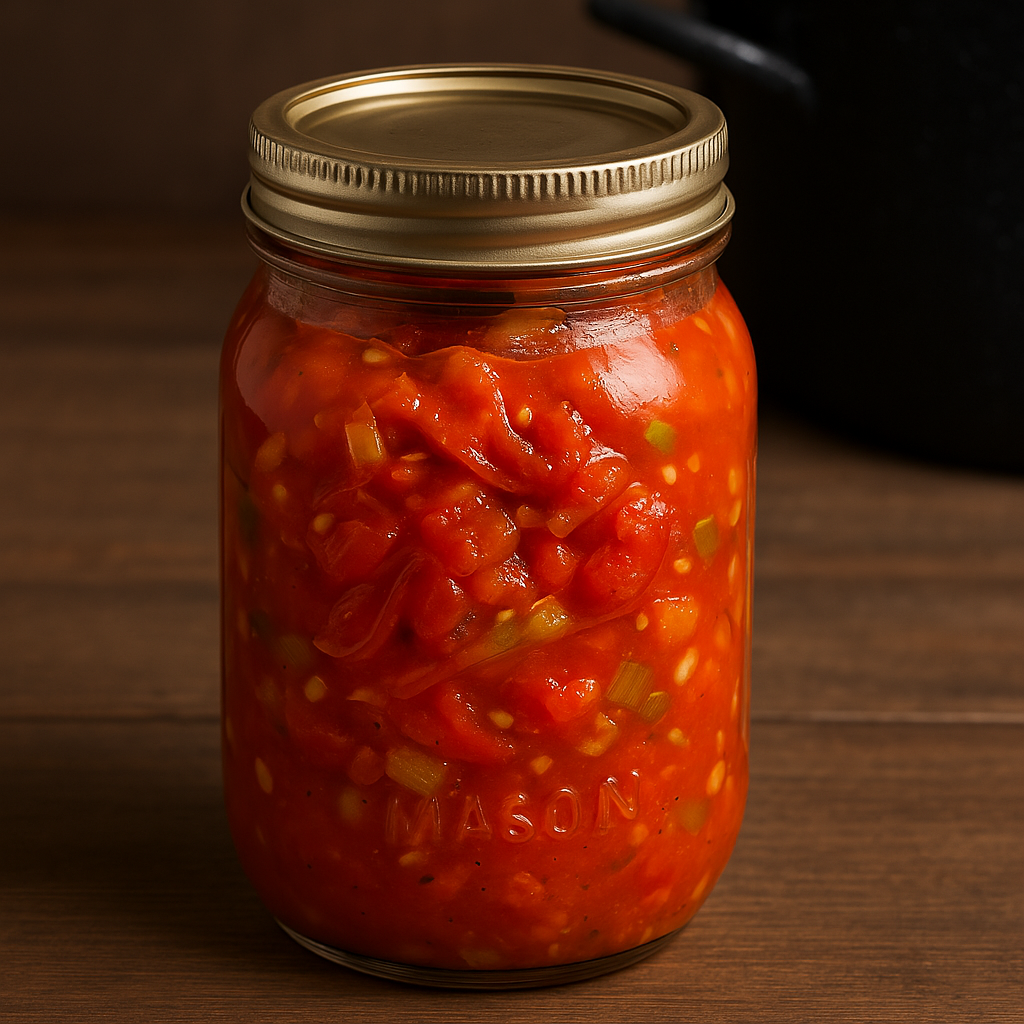Sun-dried tomatoes are a beloved pantry staple prized for their deep, sweet-tart flavor and chewy texture. Their concentrated umami-rich taste can elevate everything from rustic pasta sauces to elegant appetizers and savory baked goods.
However, not all sun-dried tomatoes come ready to use—many are dry-packed and require rehydration to unlock their full potential.
Rehydrating sun-dried tomatoes helps restore their supple, velvety texture while mellowing out their intensely concentrated flavor.
Whether you’re planning to blend them into a creamy dip, layer them on pizza, or fold them into grain bowls and pasta salads, learning how to rehydrate them properly will give you better results and more versatility in the kitchen.
In this guide, we’ll explore why and when to rehydrate sun-dried tomatoes, review the different methods available, and provide tips on storage and usage.
Why Rehydrate Sun-Dried Tomatoes?
Table of Contents

Sun-dried tomatoes are typically available in two forms:
Dry-packed – These are dehydrated, leathery tomatoes sold in airtight pouches or jars without oil. They are shelf-stable and can last for months, but their texture is tough and chewy.
Oil-packed –These tomatoes are pre-soaked in olive oil, often with herbs, garlic, or vinegar, and stored in jars. They’re soft, pliable, and usually ready to use right out of the container.
If you’re using dry-packed sun-dried tomatoes, rehydrating them is essential for most recipes. Here’s why:
Improved Texture – Rehydration restores softness, making the tomatoes easier to chew, slice, chop, or blend.
Better Flavor Distribution -When rehydrated, sun-dried tomatoes release their flavor more evenly in sauces, dressings, or baked dishes.
Easier to Digest – Softened tomatoes are gentler on the digestive system, especially when used in large quantities.
Enhanced Presentation –Rehydrated tomatoes have a more appetizing look and texture, especially in fresh salads or on charcuterie boards.
You can skip rehydration only when –
- The tomatoes will cook in liquid-rich dishes like soups or stews, where they’ll naturally soften.
- You want a chewy bite for recipes like focaccia or bread.
- You’re using oil-packed sun-dried tomatoes, which are already hydrated.
How to Rehydrate Sun-Dried Tomatoes?

There are several methods to rehydrate sun-dried tomatoes, depending on how quickly you need them and what flavors you’d like to infuse. Here are the most effective and commonly used techniques:
1. Soaking in Hot Water (Standard Method)
This is the most straightforward and reliable way to rehydrate sun-dried tomatoes, ideal for everyday cooking.
- Boil water in a kettle or saucepan.
- Place sun-dried tomatoes in a heatproof bowl. Use about 1 cup of water per 1/2 cup of tomatoes.
- Pour the boiling water over the tomatoes until fully submerged.
- Cover the bowl with a lid or plate to trap the heat.
- Let soak for 20 to 30 minutes, or until the tomatoes are soft and plump.
- Drain using a fine-mesh sieve and pat dry with paper towels.
- Save the tomato-infused soaking water—it’s packed with flavor and can be added to soups, sauces, or risottos for an extra savory punch.
2. Simmering in Broth or Wine (Quick-Flavor Method)

If you’re short on time or want to impart more depth of flavor, simmering the tomatoes in broth, stock, or wine is an excellent shortcut.
- Add sun-dried tomatoes to a small saucepan.
- Pour in enough broth, wine, or water to cover them completely.
- Bring to a gentle simmer over medium heat.
- Cook for 5 to 10 minutes, checking periodically for softness.
- Drain and cool slightly before handling.
- Use vegetable or chicken broth for savory dishes, or white wine for Mediterranean-style recipes.
3. Marinating in Oil or Vinegar (Cold Dish Method)
This method is perfect for salads, antipasti, or mezze platters where you want the tomatoes to be flavorful but not soggy.
- Place the sun-dried tomatoes in a small jar or bowl.
- Cover them with extra virgin olive oil, or a blend of oil and a splash of vinegar (such as balsamic, sherry, or red wine vinegar).
- Add optional aromatics like garlic cloves, rosemary, thyme, or chili flakes.
- Cover and refrigerate for several hours or overnight.
- Use directly or drain and pat dry before serving.
This method also preserves the tomatoes for a few extra days and makes a deliciously infused oil.
How to Store Rehydrated Sun-Dried Tomatoes

Once rehydrated, sun-dried tomatoes are perishable and should be treated like any fresh ingredient. Here is how you can store dried tomatoes.
Storage Tips
- Refrigerate rehydrated tomatoes in an airtight container.
- Use within 2–3 days if soaked in water or broth.
- If marinated in oil, they can last up to 7 days, especially if submerged completely.
- Don’t freeze rehydrated tomatoes, as freezing changes their texture.
- Save That Soaking Liquid.
- Don’t throw out the soaking water—especially if you rehydrated in broth or wine. It absorbs the tomato’s rich umami essence and can be:
- Stirred into soups or risottos-
- Used as a base for sauces or gravies
- Added to grains like couscous or quinoa for extra flavor
- Creative Ways to Use Rehydrated Sun-Dried Tomatoes
- Once your tomatoes are soft and supple, the culinary possibilities are endless. Here are some ideas:
- Chop and toss into pasta with olive oil, garlic, and fresh basil.
- Blend into pesto with pine nuts, Parmesan, and fresh herbs.
- Stir into hummus or dips for a smoky, sweet twist.
- Top salads, flatbreads, or grain bowls for texture and visual appeal.
- Mix into stuffing or savory bread pudding.
- Add to quiche or frittata mixtures for flavor bombs in every bite.
When Rehydration Isn’t Necessary
In some cases, you can skip the rehydration step entirely:
- When baking into bread where moisture content is controlled.
- If cooking in moist environments, like stews or braises, that will naturally soften them.
- When using oil-packed tomatoes, which are already rehydrated and infused with flavor.
- In these cases, just slice or chop the tomatoes as needed and add directly to your dish.
Wrapping Up
Rehydrating sun-dried tomatoes is an easy but impactful kitchen skill that transforms a tough, chewy ingredient into a flavorful, flexible addition to countless dishes.
Whether you soak them in hot water, simmer them in wine, or marinate them in oil, the process brings out the best in their concentrated tomato flavor.
With just a few minutes of effort, you’ll unlock deeper flavor, better texture, and more versatility in your cooking. So next time you’re digging through your pantry and find a bag of sun-dried tomatoes, take a moment to rehydrate them—you’ll be surprised how much of a difference it makes.
Leave a Reply